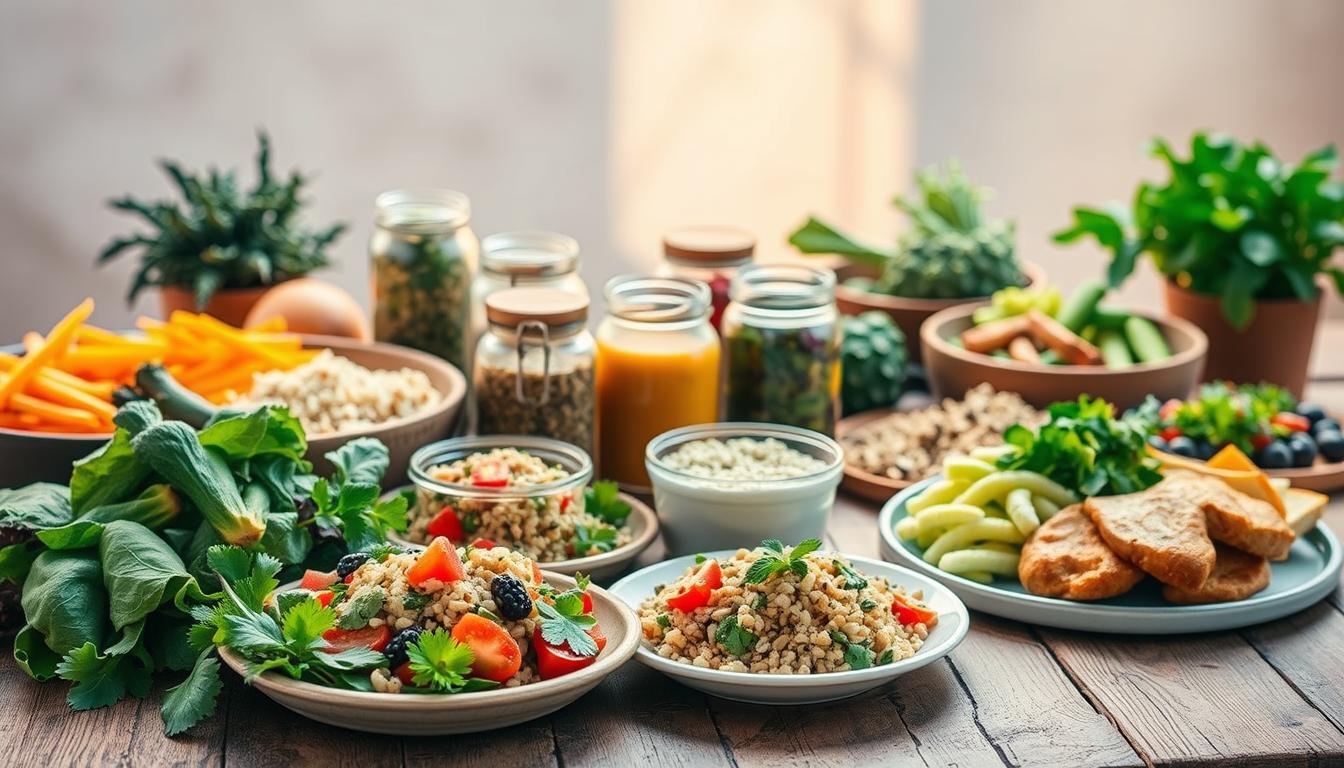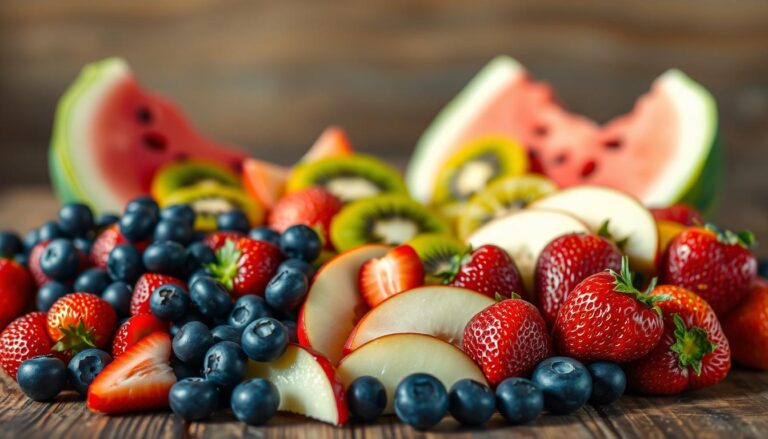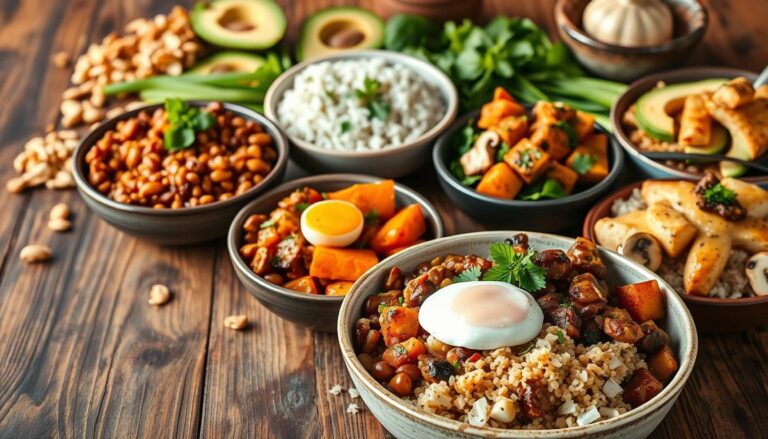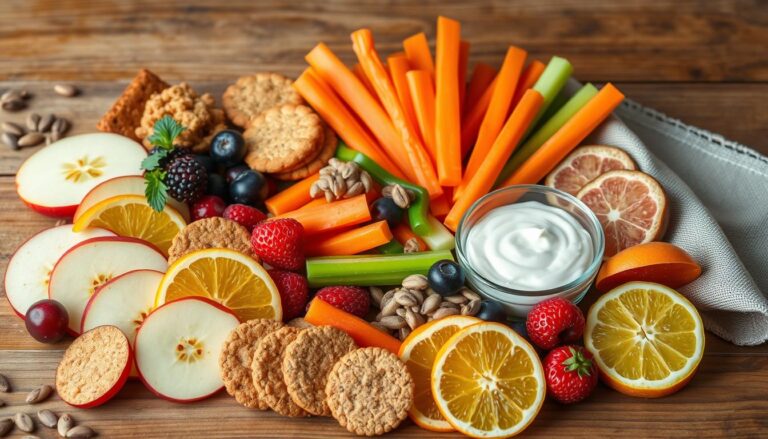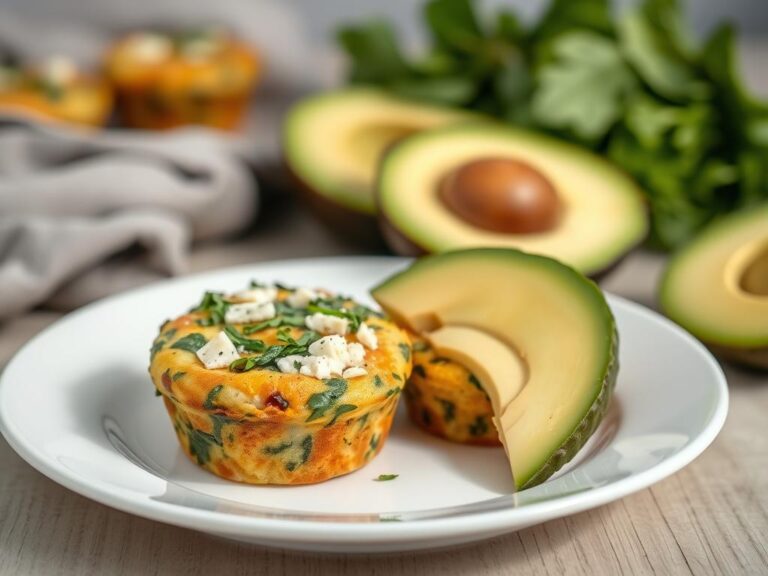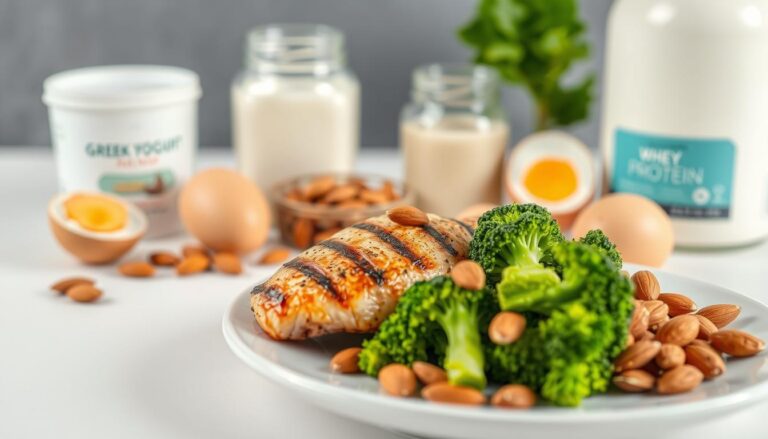Tasty Niche Functional Diet Recipes for Healthy Living
Eating healthy doesn’t have to be boring. With Functional Nutrition, you can enjoy delicious meals that nourish your body. Niche Functional Diet Recipes are designed to cater to specific dietary needs, making it easier to achieve Healthy Living.
By incorporating these recipes into your daily life, you can experience the benefits of Functional Nutrition firsthand. From boosting energy levels to supporting overall well-being, the right food can make all the difference.
Key Takeaways
- Discover the power of Functional Nutrition for a healthier you.
- Explore Niche Functional Diet Recipes tailored to your needs.
- Enjoy delicious meals that support Healthy Living.
- Boost energy levels and overall well-being with the right food.
- Make informed choices about your diet for a better life.
The Power of Functional Nutrition for Optimal Health
As we delve into the world of nutrition, the term “functional nutrition” emerges as a key player in achieving overall wellness. Functional nutrition focuses on using food as a tool to prevent and treat diseases, rather than just consuming calories.
What Makes a Diet “Functional”?
A diet is considered “functional” when it provides the body with the necessary nutrients, vitamins, and minerals to support optimal health. This involves consuming a variety of whole foods, including fruits, vegetables, whole grains, lean proteins, and healthy fats. A functional diet also involves avoiding or limiting foods that can cause inflammation or other negative health effects.
- Nourishing the body with the right foods
- Supporting overall health and wellness
- Preventing chronic diseases
The Science-Backed Benefits of Functional Foods
Functional foods offer numerous health benefits backed by scientific research. These foods are rich in nutrients and have been shown to support heart health, improve digestive health, and even help manage chronic diseases. For example, foods high in omega-3 fatty acids, such as salmon, have been shown to reduce inflammation and support heart health.
Essential Ingredients for Niche Functional Diet Recipes
Creating effective niche functional diet recipes requires a deep understanding of the essential ingredients that promote optimal health. These ingredients are the building blocks of functional nutrition, providing the body with the necessary nutrients to thrive.
Superfoods and Their Nutritional Profiles
Superfoods are nutrient-dense foods that offer numerous health benefits. Examples include berries rich in antioxidants, leafy greens high in vitamins and minerals, and fatty fish packed with omega-3 fatty acids. Incorporating these superfoods into niche functional diet recipes can enhance their nutritional value.
Anti-inflammatory Ingredients
Chronic inflammation is a significant health concern, and diet plays a crucial role in managing it. Anti-inflammatory ingredients like turmeric, ginger, and omega-3 rich foods can help reduce inflammation. Using these ingredients in functional diet recipes can support overall health and well-being.
Adaptogenic Herbs and Spices
Adaptogenic herbs and spices help the body adapt to stress and promote balance. Examples include ashwagandha, rhodiola, and holy basil. Incorporating these adaptogens into niche functional diet recipes can enhance their health benefits and support resilience.
Anti-Inflammatory Diet Recipes for Chronic Pain Management
Chronic pain can be debilitating, but certain anti-inflammatory diet recipes offer a beacon of hope. By incorporating specific ingredients known for their anti-inflammatory properties, individuals can potentially alleviate some of the discomfort associated with chronic pain.
Turmeric and Ginger Breakfast Bowl
Starting your day with a Turmeric and Ginger Breakfast Bowl can be a delicious way to combat inflammation. This recipe combines the anti-inflammatory properties of turmeric and ginger with nutritious ingredients like oats and fruit.
Preparation Tips and Variations
To make this recipe even more versatile, consider adding different types of milk or varying the fruit toppings based on seasonal availability. Experimenting with spices like cinnamon can also enhance the flavor.
Omega-3 Rich Salmon and Vegetable Dinner
The Omega-3 Rich Salmon and Vegetable Dinner is another powerful anti-inflammatory recipe. Salmon is rich in omega-3 fatty acids, which are known to reduce inflammation, while vegetables add fiber and antioxidants.
| Recipe | Key Ingredients | Benefits |
|---|---|---|
| Turmeric and Ginger Breakfast Bowl | Turmeric, Ginger, Oats | Reduces morning inflammation |
| Omega-3 Rich Salmon and Vegetable Dinner | Salmon, Vegetables | Rich in Omega-3, reduces inflammation |
| Berry and Greens Anti-Inflammatory Smoothie | Berries, Greens | Packed with antioxidants, anti-inflammatory |
Berry and Greens Anti-Inflammatory Smoothie
A Berry and Greens Anti-Inflammatory Smoothie makes for a quick and nutritious snack or meal replacement. Berries are rich in antioxidants, and when combined with greens, they provide a potent anti-inflammatory effect.
By incorporating these anti-inflammatory diet recipes into your daily routine, you can take a proactive step towards managing chronic pain. Each of these recipes offers a unique combination of ingredients known for their anti-inflammatory properties, making them a great addition to a diet focused on pain management.
Gut-Healing Recipes for Digestive Health
Gut health is a cornerstone of well-being, and the right recipes can significantly enhance digestive health. A healthy gut microbiome is crucial for nutrient absorption, immune function, and even mental health. Incorporating gut-healing recipes into your diet can be a simple yet effective way to support your overall health.
Probiotic-Rich Fermented Foods
Probiotic-rich fermented foods are a great addition to a gut-healing diet. These foods contain live cultures that help populate the gut with beneficial bacteria, enhancing digestive health. Fermented foods are not only delicious but also packed with nutrients.
Homemade Sauerkraut and Kimchi
Making sauerkraut and kimchi at home is easier than you think. These fermented foods are rich in probiotics and can be customized with your favorite spices and vegetables. Incorporating them into your meals can significantly boost your gut health.
Bone Broth and Collagen-Boosting Soups
Bone broth is another gut-healing staple. Rich in collagen, it helps heal the gut lining and improve digestion. Sipping on a warm bowl of bone broth or collagen-boosting soups can be a comforting way to support your digestive health.
Prebiotic Fiber-Packed Meals
In addition to probiotics, prebiotic fiber plays a crucial role in gut health. Prebiotic fiber feeds the good bacteria, helping them thrive. Incorporating prebiotic-rich foods like asparagus, bananas, and onions into your meals can enhance your digestive well-being.
By combining these gut-healing recipes into your daily routine, you can take a proactive approach to improving your digestive health and overall well-being.
Brain-Boosting Cognitive Function Diet Recipes
Nourishing your brain with the right foods is essential for optimal cognitive function. A diet rich in brain-boosting nutrients can enhance mental clarity, improve focus, and support overall brain health. In this section, we will explore delicious and nutritious recipes designed to support cognitive function.
Omega-Rich Breakfast Options
Starting your day with omega-rich foods can have a significant impact on brain health. Omega-3 fatty acids are known to support cognitive function and may even help alleviate symptoms of depression. Try incorporating walnuts or chia seeds into your breakfast routine.
Some great omega-rich breakfast ideas include walnut and chia seed pudding or a hearty bowl of oatmeal with walnuts and a splash of milk.
Antioxidant-Packed Lunch Ideas
Antioxidants play a crucial role in protecting the brain from oxidative stress. Incorporating antioxidant-rich foods into your lunch can help support cognitive health. Consider adding berries, leafy greens, or other antioxidant-rich foods to your meals.
Blueberry and Walnut Power Bowl
A simple yet effective recipe is a blueberry and walnut power bowl. Mix together fresh blueberries, chopped walnuts, and a handful of spinach for a nutrient-packed lunch that supports brain health.
Evening Meals for Mental Clarity
Evening meals can also play a significant role in supporting mental clarity. Incorporating foods rich in antioxidants and omega-3s can help promote a restful night’s sleep and support cognitive function. Consider preparing a hearty dinner with roasted vegetables and a source of omega-3s, such as salmon.
Exploring Popular Niche Functional Diet Recipes
Delving into the world of niche functional diets reveals a plethora of recipes tailored to specific health needs. These diets have gained popularity for their ability to address particular health concerns through targeted nutrition.

Autoimmune Protocol (AIP) Diet Recipes
The Autoimmune Protocol (AIP) diet is designed to help manage autoimmune diseases by eliminating potentially inflammatory foods and focusing on nutrient-dense ingredients. Recipes under this diet often feature anti-inflammatory ingredients like turmeric and ginger.
A sample AIP recipe includes a turmeric-infused salmon dish, where salmon fillets are marinated in a mixture of turmeric, coconut oil, and garlic, then baked to perfection. This recipe not only adheres to AIP guidelines but also provides a flavorful and nutritious meal.
FODMAP-Friendly Functional Meals
FODMAP-friendly meals are crucial for individuals with digestive issues such as IBS. These recipes avoid high FODMAP ingredients, instead incorporating low FODMAP alternatives that are gentle on the digestive system.
| Low FODMAP Ingredient | High FODMAP Ingredient | Recipe Idea |
|---|---|---|
| Rice | Wheat | Rice bowls with grilled chicken |
| Lactose-free milk | Regular milk | Lactose-free smoothies |
| Green beans | Beans (kidney, black) | Steamed green beans with olive oil |
Ketogenic Functional Food Combinations
The ketogenic diet focuses on high-fat, low-carbohydrate meals to induce a metabolic state called ketosis. Functional ketogenic recipes often combine healthy fats with nutrient-dense foods to support overall health.
An example of a ketogenic functional food combination is a salad with avocado, nuts, and olive oil. This meal is not only keto-friendly but also rich in healthy fats and antioxidants.
By exploring these niche functional diet recipes, individuals can find tailored nutrition plans that meet their specific health needs, whether it’s managing autoimmune diseases, digestive issues, or optimizing metabolic health.
Hormone-Balancing Recipes for Wellness
The connection between diet and hormonal health is profound, with certain foods and recipes offering a natural path to balance. Hormonal imbalances can lead to a variety of health issues, but by incorporating specific hormone-balancing recipes into our diet, we can take a significant step towards achieving overall wellness.
Seed Cycling Breakfast Recipes
Seed cycling is a natural approach to supporting hormonal balance by consuming specific seeds during different phases of the menstrual cycle. For breakfast, incorporating flaxseeds and pumpkin seeds during the follicular phase can be beneficial. A simple recipe involves mixing ground flaxseeds with almond milk, honey, and sliced bananas, then topping it with pumpkin seeds for added nutrition.
Example Recipe: Flaxseed and Banana Smoothie – Blend 1 tablespoon of ground flaxseeds, 1 ripe banana, 1 cup of almond milk, and 1 teaspoon of honey. Top with 1 tablespoon of pumpkin seeds and serve chilled.
Cruciferous Vegetable Dishes for Hormonal Health
Cruciferous vegetables, such as broccoli, cauliflower, and kale, are rich in compounds that support liver function and, by extension, hormonal balance. Including these vegetables in our meals can aid in the detoxification process and promote hormonal health.
Roasted Broccoli Recipe – Toss 1 bunch of broccoli with 2 tablespoons of olive oil, salt, and pepper. Roast in the oven at 400°F (200°C) for 20-25 minutes until tender and slightly caramelized.
Adaptogenic Elixirs and Teas
Adaptogenic herbs like ashwagandha, maca, and rhodiola can help the body adapt to stress, thereby supporting hormonal balance. Consuming these herbs in the form of elixirs or teas can be a soothing and effective way to promote hormonal wellness.
Ashwagandha Tea Recipe – Steep 1 teaspoon of ashwagandha root powder in 1 cup of boiling water for 5-7 minutes. Strain and enjoy warm, optionally sweetened with honey.
By incorporating these hormone-balancing recipes into our daily diet, we can take a proactive approach to supporting our hormonal health and overall wellness.
Energy-Boosting Functional Recipes for Active Lifestyles
Nourish your body and fuel your passions with our collection of energy-boosting functional diet recipes. Whether you’re an athlete, a fitness enthusiast, or simply someone who leads an active lifestyle, the right nutrition can make all the difference in your performance and recovery.
Pre-Workout Nutrient-Dense Meals
Starting your day or preparing for a workout with the right nutrients is crucial for optimal performance. Complex carbohydrates, lean proteins, and healthy fats are the foundation of a pre-workout meal. Consider a breakfast bowl with quinoa, almond butter, banana, and a scoop of protein powder for a nutrient-packed start.

Post-Exercise Recovery Recipes
After a workout, your body needs the right nutrients to recover and rebuild. Protein-rich foods and complex carbohydrates are essential for muscle recovery and energy replenishment.
Protein-Rich Recovery Smoothies
A smoothie made with Greek yogurt, berries, spinach, and a scoop of whey protein can be an effective way to refuel after a workout. This combination provides protein, antioxidants, and complex carbohydrates.
Sustained Energy Snacks and Meals
For sustained energy, focus on snacks and meals that combine protein, healthy fats, and complex carbohydrates. Examples include apple slices with almond butter, energy balls made with oats and nuts, or a salad with grilled chicken and avocado.
| Meal Type | Key Ingredients | Benefits |
|---|---|---|
| Pre-Workout | Complex carbs, lean proteins, healthy fats | Provides sustained energy and supports muscle function |
| Post-Exercise Recovery | Protein-rich foods, complex carbs | Aids in muscle recovery and replenishes energy stores |
| Sustained Energy Snacks | Protein, healthy fats, complex carbs | Maintains energy levels and supports overall nutrition |
Conclusion: Transforming Your Health Through Functional Nutrition
As we’ve explored throughout this article, functional nutrition is a powerful tool for achieving optimal health. By incorporating niche functional diet recipes into your daily routine, you can experience a significant transformation in your overall well-being.
The recipes and principles outlined in the previous sections have shown how functional foods can help manage chronic pain, improve digestive health, boost cognitive function, and balance hormones. By making informed choices about the food you eat, you can take control of your health and unlock a more vibrant, energetic you.
Embracing functional nutrition is a journey, and it’s essential to start small. Begin by introducing some of the delicious and nutritious recipes discussed in this article into your meal planning. As you become more comfortable with the principles of functional nutrition, you can continue to expand your repertoire and make lasting changes to your diet.
By adopting a functional nutrition approach, you’re not just changing your diet; you’re transforming your health. Take the first step today and discover the benefits of functional nutrition for yourself.

